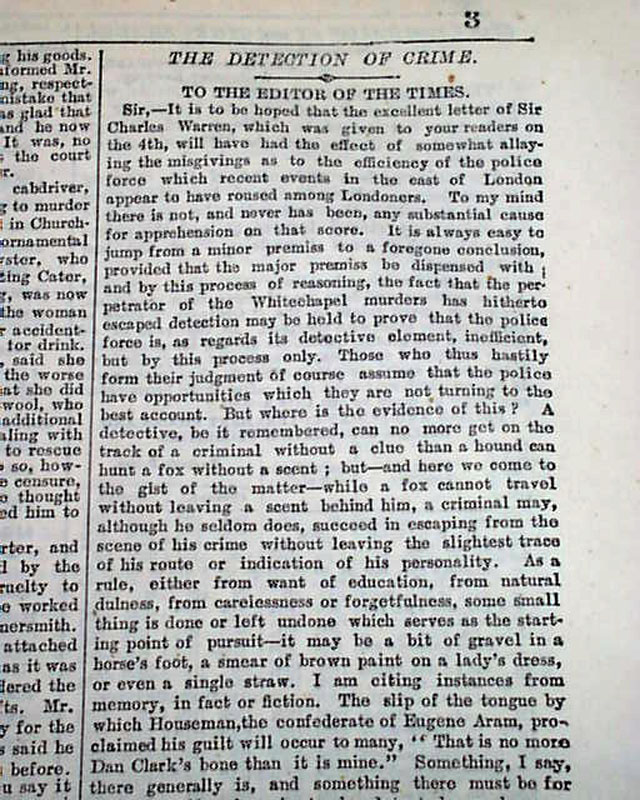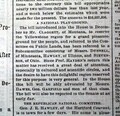Home >
Investigating "Jack the Ripper"... Lengthier than most...
Investigating "Jack the Ripper"... Lengthier than most...
Item # 705452
October 11, 1888
THE TIMES, London, England, Oct. 11, 1888
* Jack the Ripper Whitechapel murders
* Best title to be had (very rare as such)
During the last half of 1888 the East End of London, primarily the Whitechapel district, was terrorized by a murderer who came to be known as Jack The Ripper. His infamous & brutal crime spree was reported in newspapers around the world--indeed, most American newspapers from 1888 reported his deeds.
But certainly the very best newspaper to find such reports would be from London--and better yet the most prestigious newspaper from the city, The Times. This is that very newspaper.
Page 5 contains two reports on this case, with headings: "The East-End Murders" (note repair in this article; no loss of text but it is a distraction) and "Whitechapel", the latter being the site of the brutal murders, and the former beginning: "A good deal of fresh evidence will be given at the adjourned inquest...".
And page 3 also has two reports, headed: "The Detection of Crime" which mentions the Whitechapel murders with: "...the fact that the perpetrator of the Whitechapel murders has hitherto escaped detection may be held to prove that the police force is...inefficient..." with more. There is also the article: "Bloodhounds" concerning the use of dogs to find criminals.
Complete in 16 pages, very nice condition save for the note mentioned above.
background: In 1888, during the height of the Jack the Ripper murders, Metropolitan Police Commissioner Sir Charles Warren considered using bloodhounds to aid the investigation, a decision that has since been scrutinized for its poor execution. Following intense public pressure after the murder of Annie Chapman, Warren arranged trials with two specially trained bloodhounds, Burgho and Barnaby, handled by Edwin Brough. The trials in Hyde Park were promising, with the dogs successfully tracking scents, including Warren’s own, demonstrating their potential value. However, despite this success, the dogs were never deployed in the Whitechapel investigations. Reasons for this included logistical concerns about using dogs in a crowded urban environment, lack of formal protocols, and Warren’s own indecisiveness amid increasing political pressure. Additionally, the dogs were temporarily withdrawn by Brough due to the police’s lack of preparedness, and Warren later claimed they had gone missing, adding to the confusion. Ultimately, the failure to utilize the bloodhounds became emblematic of the Metropolitan Police’s disorganized response, and it remains a controversial footnote in the legacy of the Ripper case and Warren’s troubled tenure.
Category: Post-Civil War


















